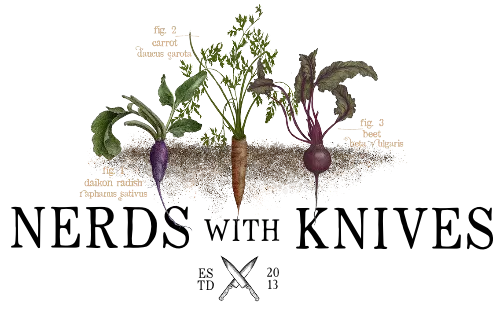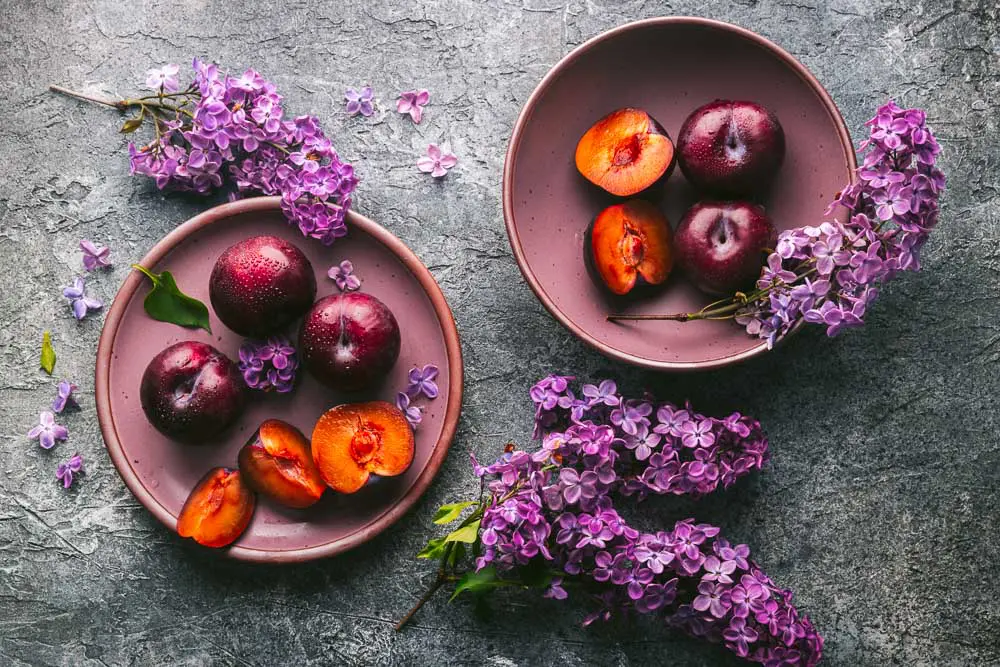
Backgrounds, sometimes referred to as surfaces, in food photography are just as important as the props (and of course the food itself). The surface sets the tone of the shot, so choosing the right one is the first step in achieving your (or your client’s) vision.
Should you choose warm, cozy wood, indicating a homey, comforting recipe? Or modern light-colored concrete for a fresh, healthy salad? The possibilities are limitless (unlike your budget). If you’re just starting out, having one or two quality backgrounds is a much better strategy than having several inexpensive but problematic ones. I’ll explain what I mean by that below. We’ll list sources of where we’ve purchased our favorite ones below.
Another option is to make your own custom surfaces, which of course has the advantage of delivering exactly what you want, since you’re in charge. Be aware that they can take quite a bit of time and require both materials and space to work in. Over the last year I’ve been making my own backgrounds and I’m admittedly obsessed. Check out the guide on how I make my own backgrounds and also our guide for 10 Cheap Food Photography Backgrounds you might already have.
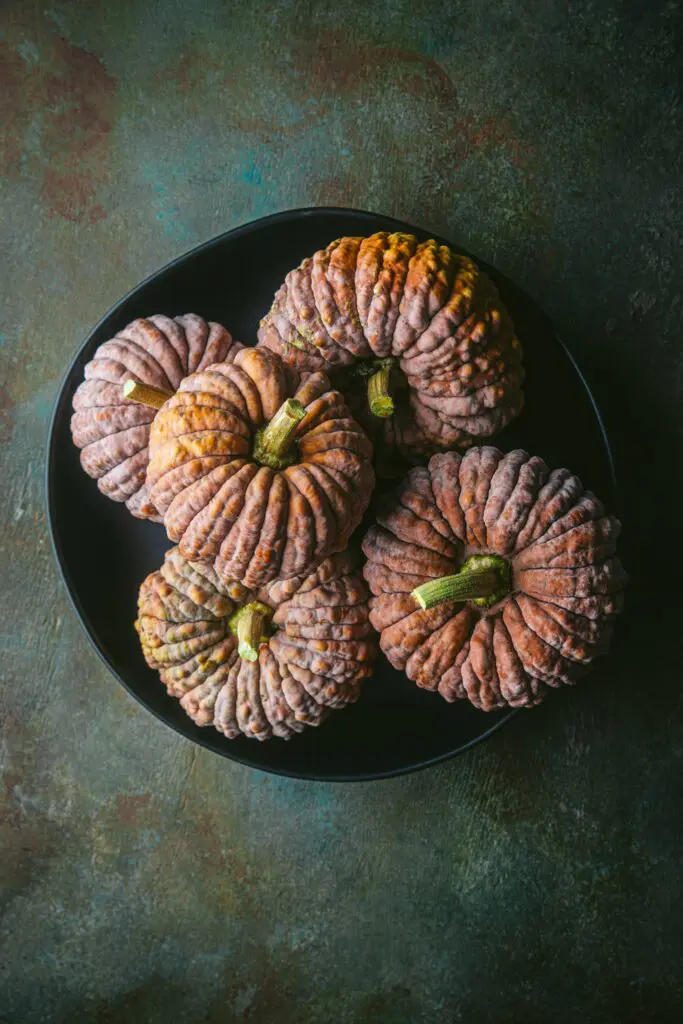
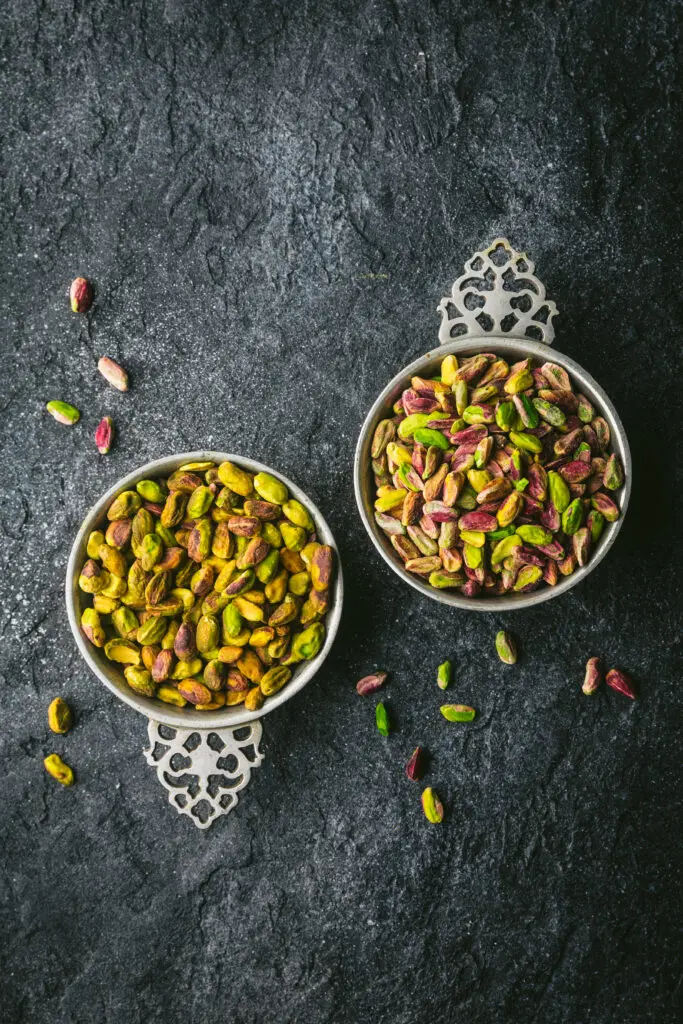
WHAT TO LOOK FOR IN A FOOD PHOTOGRAPHY BACKGROUND
There are many different kinds of backgrounds and there are pros and cons to each of them. Regardless of style or material, these are a few things we always look for.
- Matte — a shiny background will result in hotspots (where the light bounces off the surface). The more matte the better.
- Texture — this is a matter of taste, but for us, the more texture, the better. But it should be somewhat subtle, as to not draw attention away from the food.
- Size — we don’t buy anything smaller than 2’x3′ (60cm x 90cm), but our favorite size to work with is 2’x4′ (60cm x 120cm).
- Colors — the most useful backgrounds are neutral tones which will work well with many different kinds of dishes. Color can be a fantastic, but start with neutrals in the beginning. One light toned, one dark, one medium is a good starting point. Colors are great for specific uses.
VINYL BACKGROUNDS
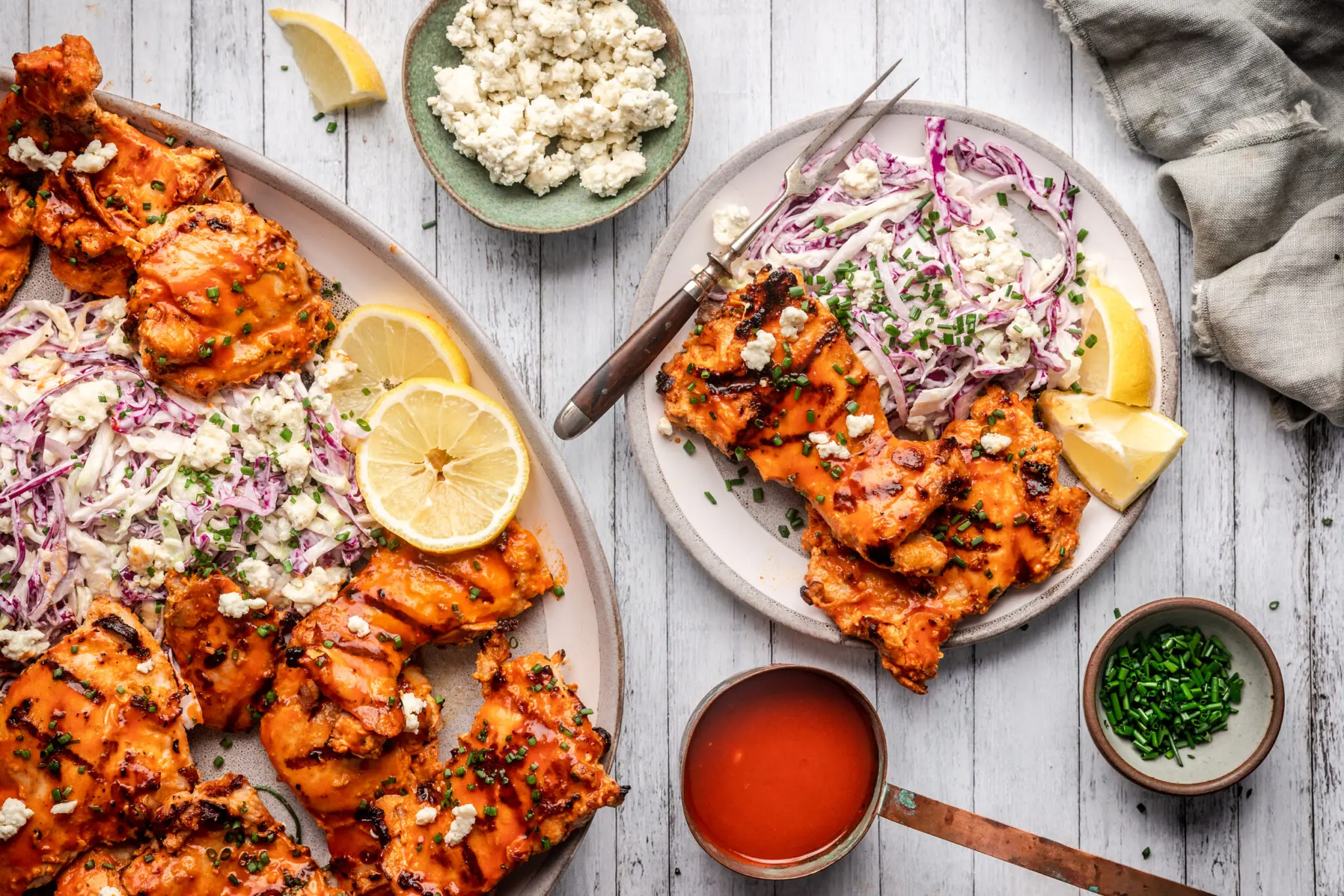
Vinyl backgrounds are a great option because they are often more affordable than heavier boards, especially concerning shipping costs. Vinyl is light and maneuverable, which is particularly useful if you need to take them outside of your studio. Make sure you store them properly, or they can crease.
Beware of cheap ones, which are often shiny (which you definitely want to avoid). If they are not printed at a high enough resolution they can look fake, especially close up.
Our favorite sources for vinyl backgrounds are:
- Best Ever Backdrops
- Captured By Lucy Backdrops
- Duo Boards by V-Flat World
- Ink and Elm
- Poppy Bee Surfaces
- Woodville Workshop
Wood, metal & plaster backgrounds
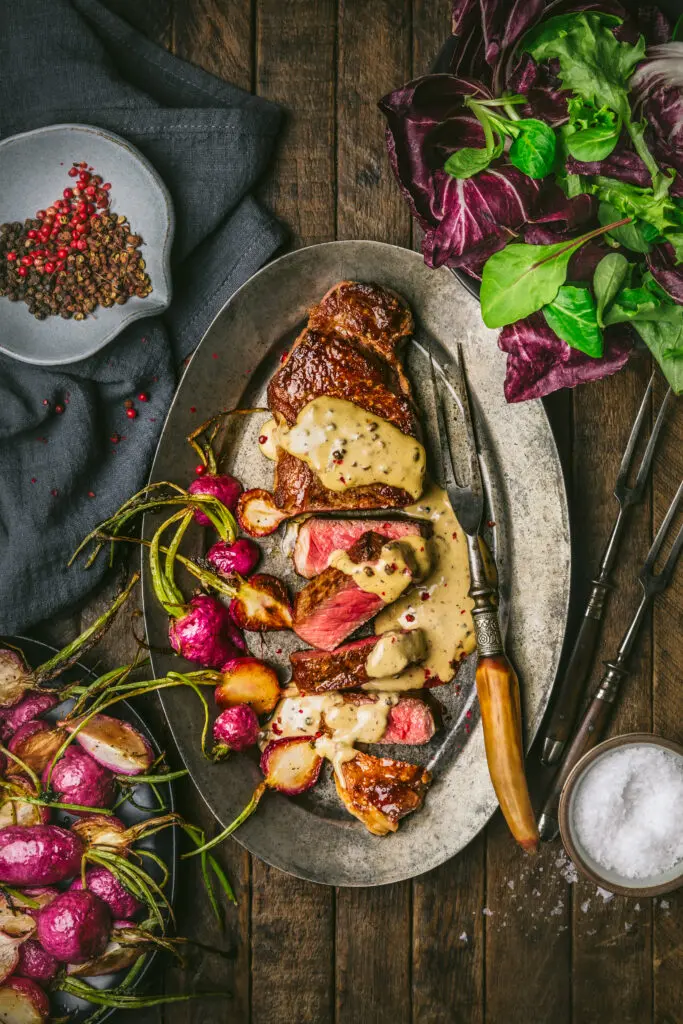
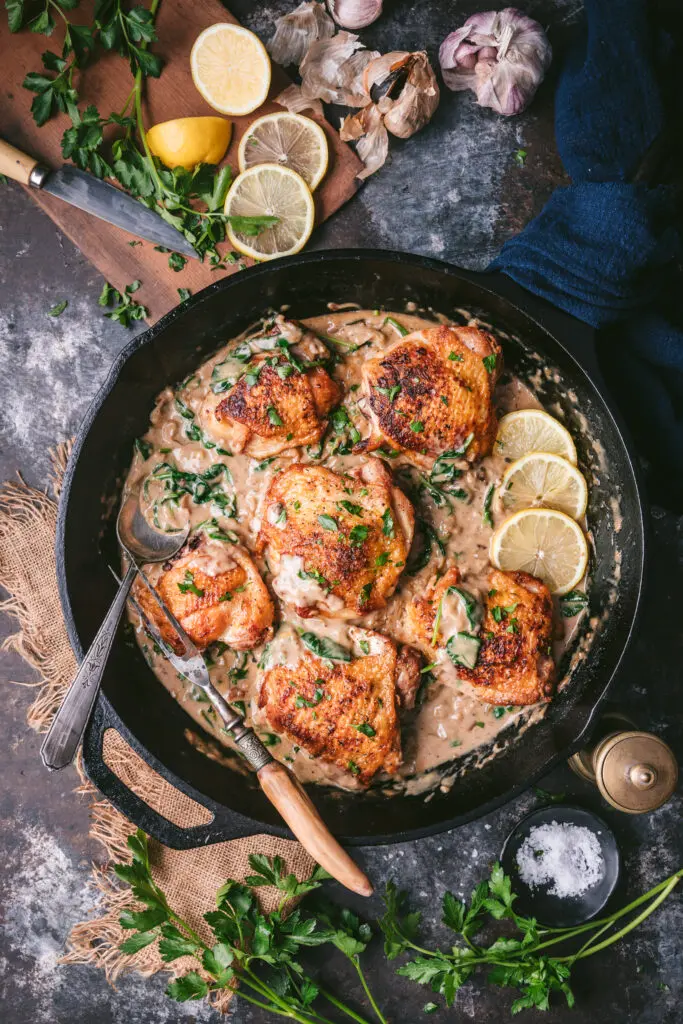
Nothing beats the beauty of real wood. It has a warmth and texture that just looks incredible in photos.
When a board is real (not printed), you can shoot as close up as you want without worrying about it looking fake. That goes not just for wood, but plaster and metal backgrounds as well.
They can sometimes be heavy, which makes them more expensive to ship and less maneuverable but the flip side is they can be used as a table surface, without the need for an additional support.
They are not cheap, but a quality, handmade board can make a huge difference in the look of a photo. If taken care of, they can last for years and take quite a bit of wear and tear.
Our favorite sources for handmade backgrounds are:
see our collection of surfaces below
These are most (not all) of the surfaces in our collection. There are some new ones in progress so we’ll update when they’re ready. Let us know which ones you like most!
OUR OWN HANDMADE SURFACES
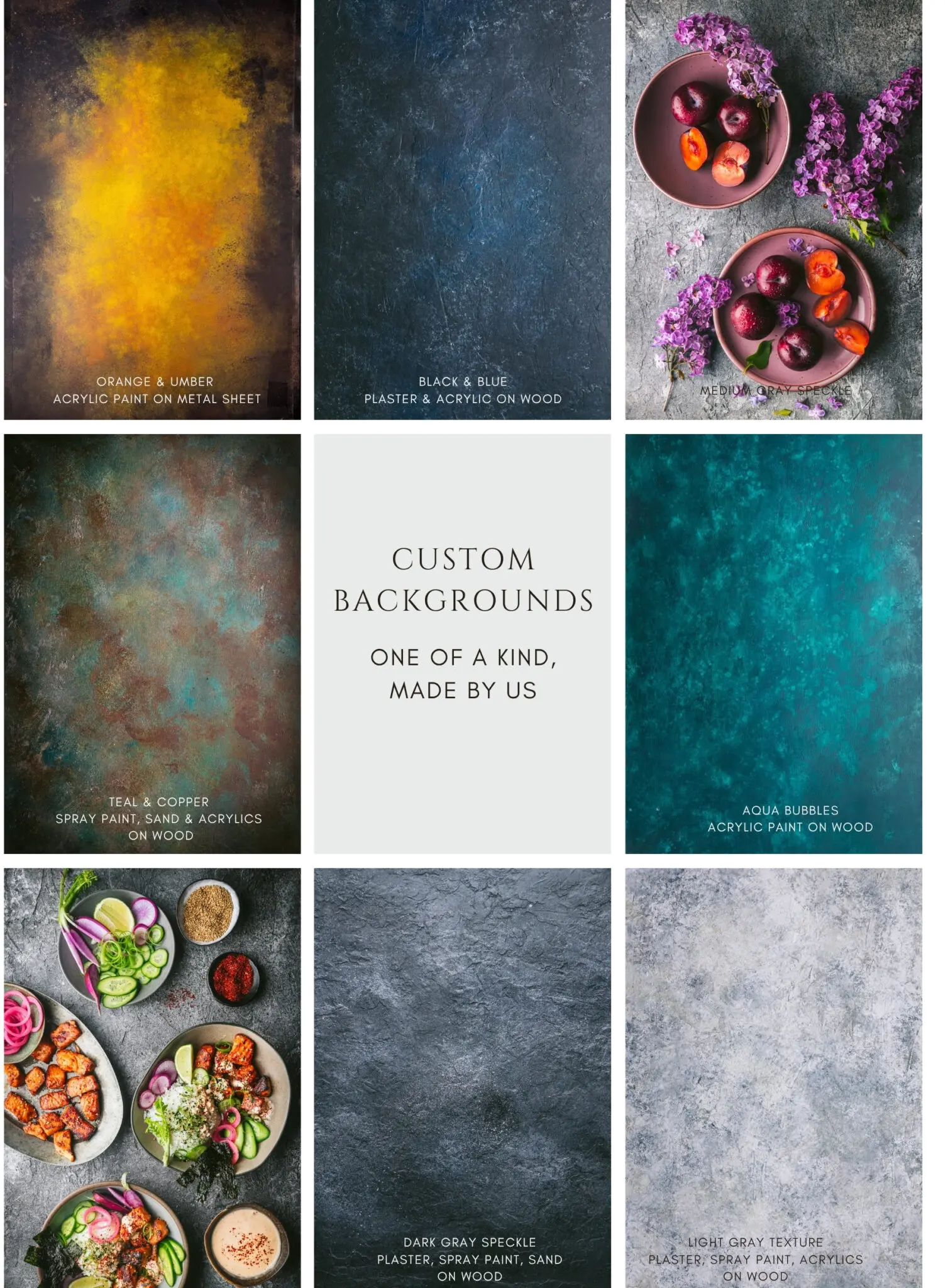
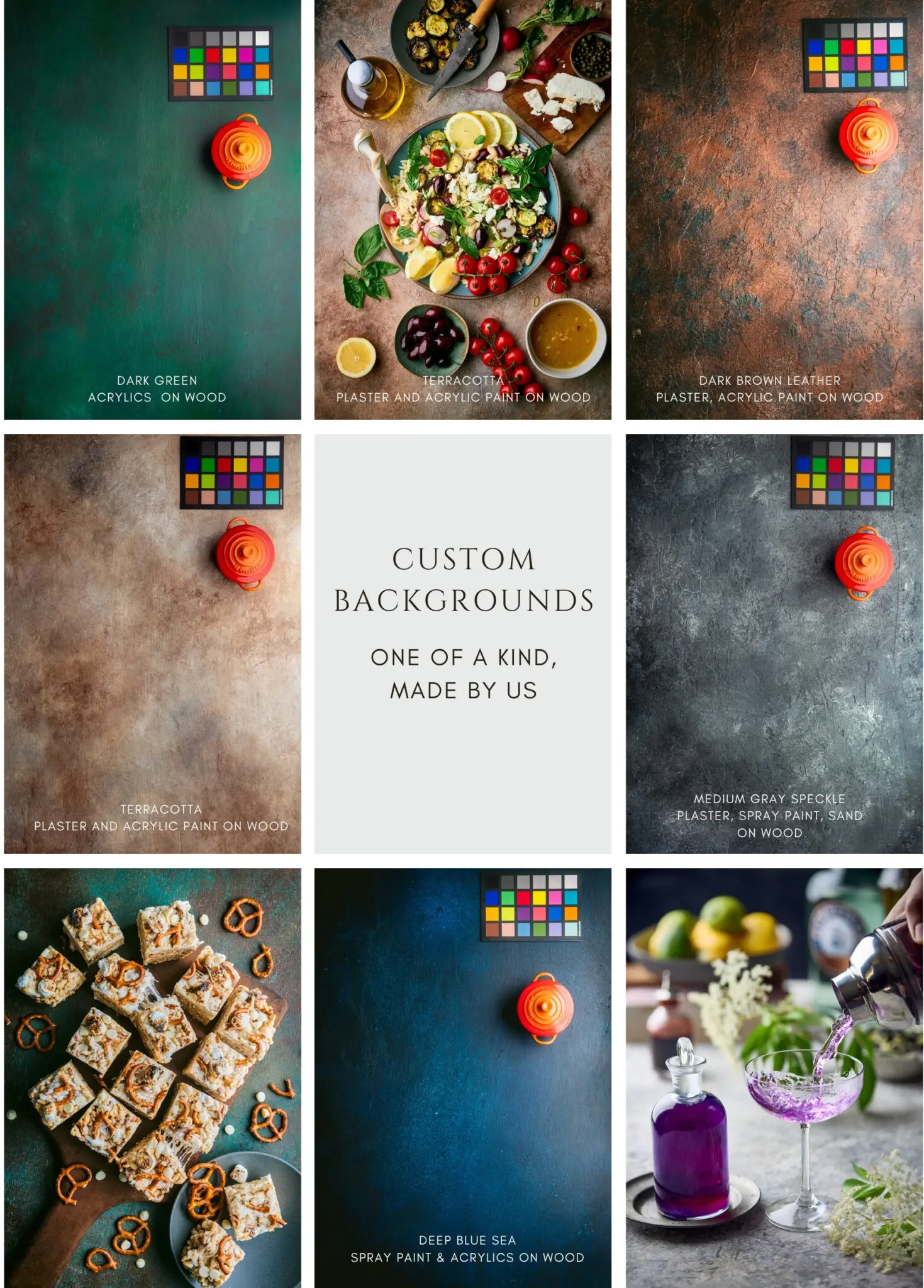
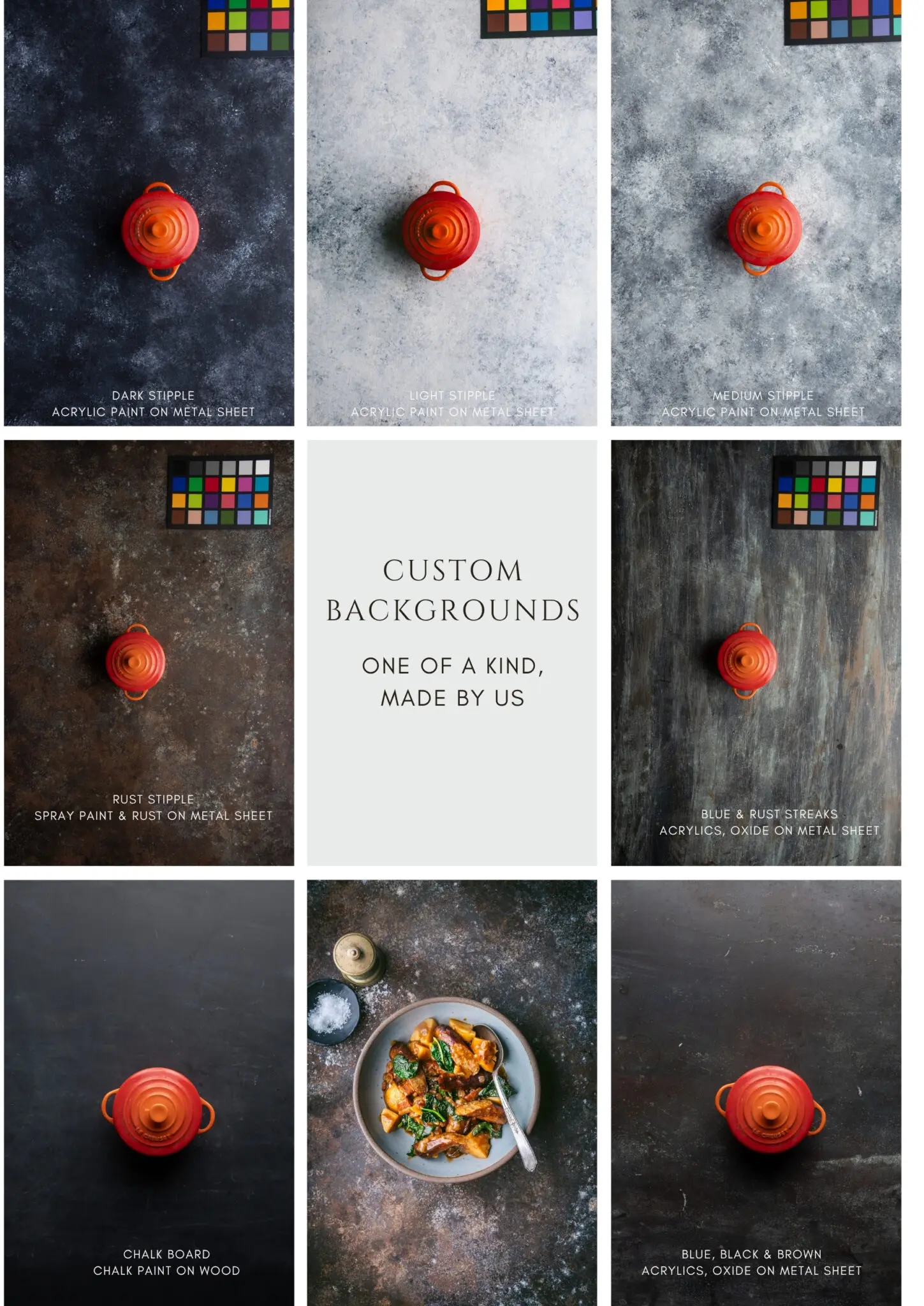
…
…
SOME OF OUR FAVORITE PURCHASED SURFACES
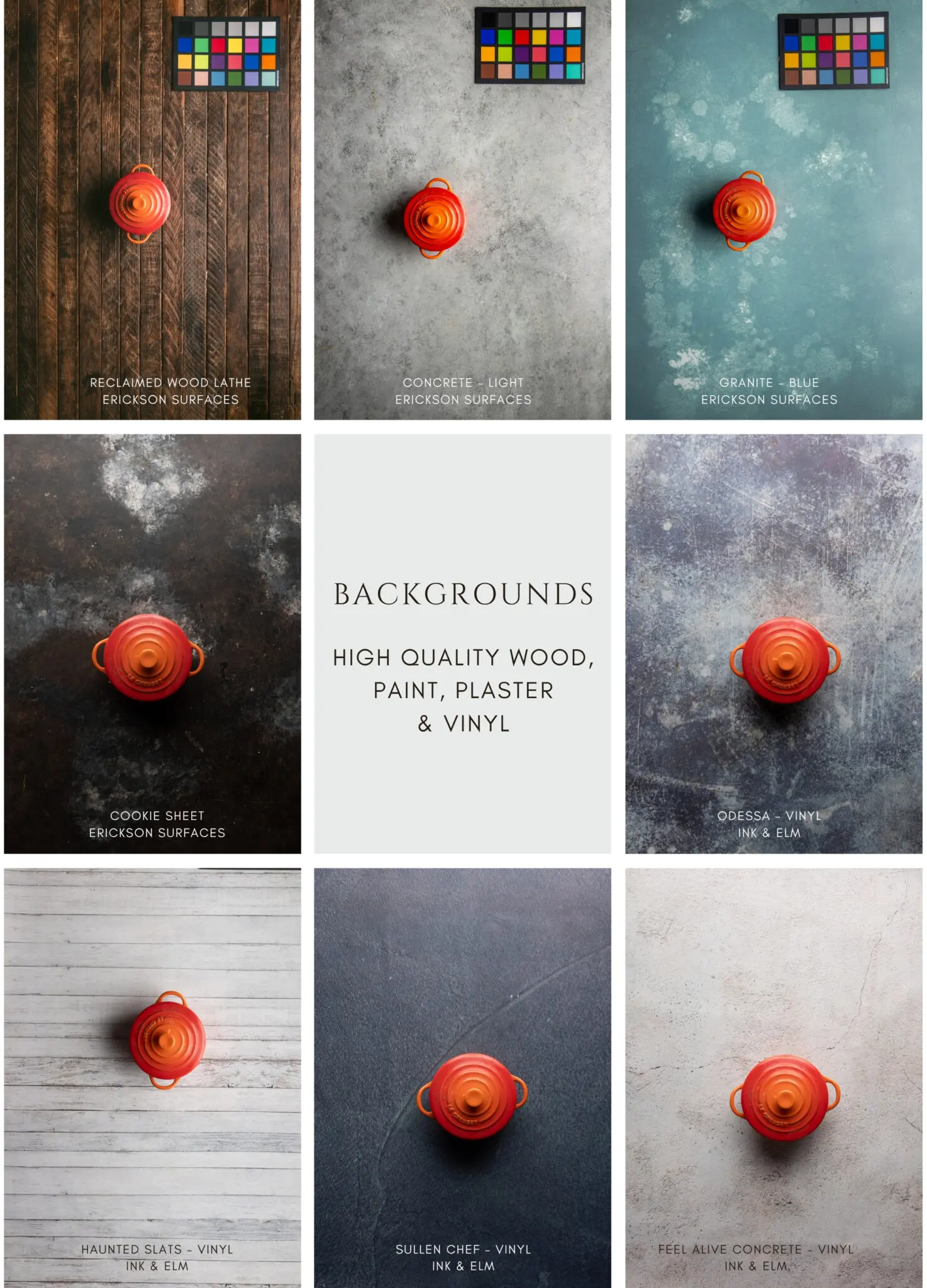
CHECK OUT OUR OTHER GUIDES
10 essential food photography props (you probably already have)
Guide to the most useful props for food photography (dishware & bakeware)
Guide to the most useful props for food photography (glassware & barware)
